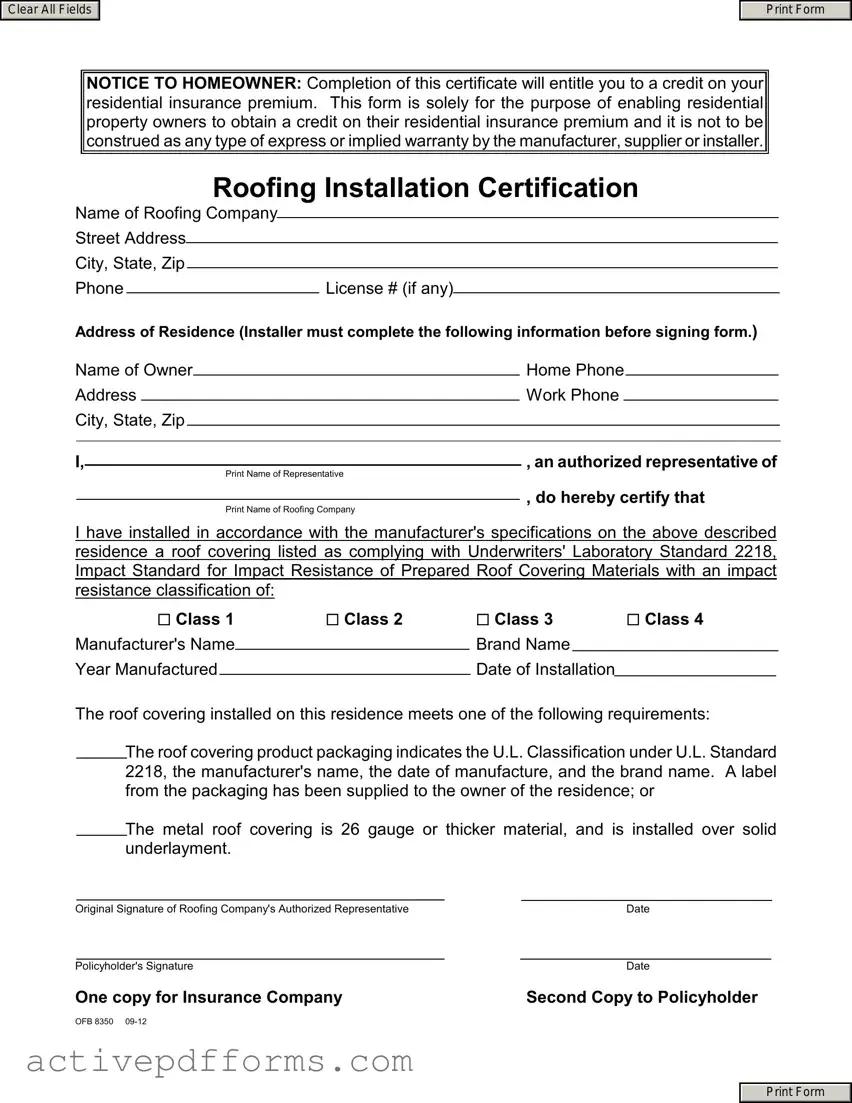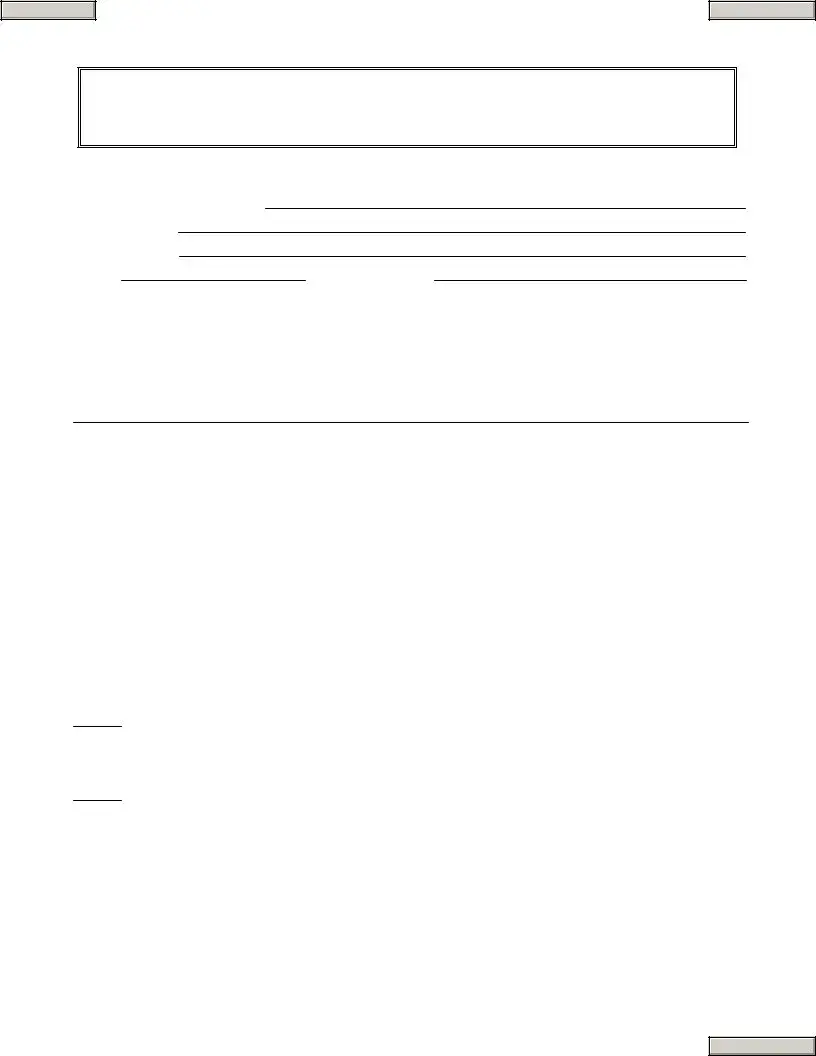Free Roofing Certificate PDF Template
The Roofing Certificate form, issued by the Texas Department of Insurance, serves as a tool for residential property owners to obtain a reduction in their residential insurance premiums through the certification of their roofing installation. This form, primarily used to document the compliance of roofing materials with specific standards for impact resistance, requires detailed information about the roofing installation, including the roofing company's details, installation date, and the classification of the used materials. It emphasizes that the completion of this certificate can significantly benefit homeowners by potentially lowering insurance costs, but it does not function as a warranty from the manufacturer, supplier, or installer.
Edit Roofing Certificate Now

